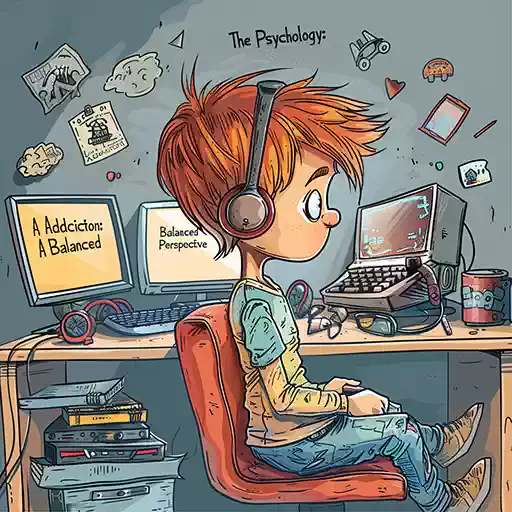Exploring the Role of Physics in Creating Realistic Game Worlds
At FOGYX, we know that creating a realistic game world requires more than just beautiful graphics. The way things interact, fall, collide, and break apart in the game environment adds depth and authenticity. In this article, we’ll explore the role of physics in video games, how it enhances the gaming experience, and why getting the physics right is essential to creating an immersive virtual world.

1. What is a Game Physics Engine?
Before we dive into the specifics, let’s take a moment to understand what a physics engine actually is. A game physics engine is a set of algorithms and rules that simulate the laws of physics in a virtual environment. In essence, it governs how objects interact with one another, how they move, and how they react to forces like gravity, friction, and collisions.There are two main types of physics engines used in game development: rigid body physics and soft body physics.
- Rigid body physics governs how solid, inflexible objects—like rocks, cars, or characters—move and interact. These objects do not deform when forces are applied to them.
- Soft body physics, on the other hand, deals with deformable objects—think of jelly, cloth, or human skin. These objects can bend, stretch, and compress depending on external forces.
1.1 How Physics Contributes to Immersion
In any game, immersion is key. Players want to feel like they’re stepping into a world that operates by familiar rules, even if it’s a fantasy or sci-fi setting. Physics helps create that immersion by making sure objects in the game world behave in ways that align with players’ expectations based on real-world experiences.For instance, if you’re playing a game where a character jumps off a building, your brain expects that character to fall to the ground according to the laws of gravity. If the fall doesn’t feel right—if it’s too slow, too fast, or lacks weight—the immersion breaks, and the game feels less believable.
At FOGYX, we focus on making sure every jump, fall, or object collision feels intuitive and realistic. This creates a more engaging and believable game world that pulls players deeper into the experience.

2. Enhancing Gameplay with Physics
One of the most exciting things about integrating physics into games is how it can enhance the gameplay itself. Physics-based mechanics open up creative possibilities for puzzle-solving, combat, and environmental interaction. They make the game world feel more dynamic and responsive to player actions.2.1 Physics-Based Puzzles
Many games incorporate physics-based puzzles to challenge players’ problem-solving skills. Games like Portal and Half-Life 2 are prime examples where the physics engine is not just a background feature but a core gameplay mechanic.In Portal, for example, players use a gun that creates portals to manipulate objects and move through the environment. The game’s physics engine ensures that objects retain their momentum as they travel through the portals, creating opportunities for clever puzzles that require players to think about how velocity, gravity, and angles interact.
These kinds of physics puzzles give players a sense of agency and creativity. By allowing them to manipulate the game world using real-world physical principles, the gameplay feels more engaging and intuitive. It’s a powerful way to immerse players in problem-solving and exploration.
2.2 Destructible Environments
Another way physics can elevate gameplay is through destructible environments. Games like Battlefield or Red Faction: Guerrilla use physics to allow players to break down walls, collapse buildings, or destroy cover. These destructible environments change the way players approach combat and strategy, creating a more interactive and unpredictable game world.Instead of fixed, static environments, destructible objects give players the freedom to alter the terrain. If a sniper is hiding in a tower, you can use explosives to bring the whole structure crashing down. The physics behind that destruction—how the tower falls, which way debris flies, and how it affects surrounding objects—makes the experience feel visceral and real.
2.3 Player Movement and Combat
Physics also play a vital role in how player movement and combat are handled in games. Whether it’s the weight of a character’s jump or the way a sword swings in combat, physics governs how these actions feel to the player.Games like Spider-Man use advanced physics engines to simulate the fluid motion of swinging between skyscrapers. The sense of momentum and inertia in these movements is crucial to making the player feel like they’re controlling a superhuman character. If the physics were off—if the swinging felt sluggish or too rigid—the entire gameplay experience would be weakened.
Similarly, in combat-heavy games like Dark Souls, the weight and impact of each sword swing or block are determined by physics. The way a weapon feels when it connects with an enemy, the recoil, and the knockback all contribute to the tactile satisfaction of combat.

3. Creating Realism: From Gravity to Water Simulation
While physics-based gameplay mechanics are a great way to enhance interactivity, realism is where game physics truly shines. Game developers use physics to create worlds that feel alive and consistent, whether it’s the way gravity pulls objects down or how water flows realistically through an environment.3.1 Gravity and Object Weight
One of the most basic and essential functions of a physics engine is simulating gravity. Gravity ensures that objects fall to the ground when dropped and that characters are pulled back down after jumping. But it’s not just about making things fall—it’s about making them fall in a way that feels believable.For example, different objects in a game should fall at different rates depending on their mass and density. A heavy boulder should crash to the ground with a thud, while a feather should float down more slowly. If every object in the game falls at the same speed, it breaks the illusion of realism. By accurately simulating weight and gravity, game developers create a world that feels grounded and believable.
3.2 Realistic Water and Fluid Simulation
Another complex area where physics engines shine is in the simulation of water and fluids. Water is notoriously difficult to simulate because of its constantly shifting nature, but realistic water can add a whole new layer of immersion to a game. Games like Sea of Thieves and Hydrophobia showcase how fluid physics can create stunningly realistic oceans, rivers, and even flooding environments.In Sea of Thieves, for example, the waves on the ocean are generated dynamically, influenced by factors like wind speed and direction. As players sail through the waves, they can feel the physics at work—the ship rocks and sways in response to the water’s movements. This adds not only realism but also an element of challenge, as players must learn to navigate the ocean's unpredictable behavior.

4. Pushing the Boundaries of Physics Engines
As gaming technology evolves, so too does the capability of physics engines. What once was considered groundbreaking—like ragdoll physics or basic destructible environments—has become standard in modern games. Today, developers are pushing the boundaries even further, experimenting with next-gen physics simulations that make virtual worlds feel more real than ever before.4.1 Soft-Body Physics and Realistic Deformation
While rigid-body physics handle hard surfaces like stone and metal, soft-body physics simulate deformable objects—materials that bend, compress, or change shape when force is applied. This technology allows for more lifelike character animations, realistic car crashes, or the stretching of materials like rubber or fabric.In a game like BeamNG.drive, soft-body physics are used to create hyper-realistic car crashes. Every impact causes the car’s frame to deform in real-time, bending metal, shattering windows, and showing damage that mimics real-life collisions. This attention to physical detail makes even the simplest actions—like driving—feel more immersive.
4.2 Physics in Virtual Reality (VR)
Virtual reality (VR) takes physics simulation to a whole new level. In VR, the player’s interactions with the environment need to feel real-time and responsive to create full immersion. The physics engine becomes even more important because players expect every object they touch or manipulate to behave exactly as it would in the real world.Games like Boneworks and Half-Life: Alyx push VR physics to the limit, allowing players to interact with objects in deeply intuitive ways. Whether you’re stacking boxes, throwing weapons, or climbing ladders, the physics engine ensures that everything moves and responds naturally to your movements, adding another layer of realism to the virtual world.
Conclusion: The Impact of Physics on Game Design
In the world of game development, physics is far more than just a technical feature—it’s a fundamental part of creating a rich, immersive experience. From realistic character movements to destructible environments and fluid simulations, physics shapes how players interact with and feel about the game world. It makes every action, jump, and explosion feel grounded in reality, drawing players deeper into the virtual space.At FOGYX, we believe that great physics design is key to delivering unforgettable gaming experiences. By focusing on how objects move
, collide, and respond to the player, we’re able to craft worlds that feel alive, dynamic, and endlessly engaging. The next time you jump into your favorite game and feel the satisfying weight of a character’s movement or the thrill of a well-timed explosion, remember—it’s all thanks to the power of physics.
19 October 2024
More articles

Puzzle games have long been a staple in the world of gaming. Whether you’re piecing together a challenging jigsaw puzzle or navigating complex logic problems, puzzle games are an incredible way to stretch your mind and sharpen your skills. At FOGYX, we’ve developed a wide range of puzzle games designed to test your brainpower while keeping the experience fun and engaging. But if you’ve ever found yourself stuck on a particularly difficult level or staring at a screen for far too long, don’t worry—you’re not alone.

Ever wondered what it takes to create a game from scratch? At FOGYX, game development is more than just coding and designing—it's a multi-layered process that brings ideas to life, turning concepts into interactive worlds that captivate players. Behind every game, there's a team of passionate individuals working through every detail, from brainstorming ideas to polishing the final product. So, how exactly does this all come together? Let’s take you through the journey from concept to launch and break down each step of the FOGYX game development process.

In today’s digital age, online games and free games are more accessible and engaging than ever before. With advancements in game design, immersive environments, and instant gratification, it’s easy to see why millions of people worldwide are drawn to the excitement of video games. However, with this rise in popularity comes the question: can gaming become addictive? At FOGYX, we recognize the importance of understanding both the positive and potentially negative impacts that gaming can have on individuals.
all articles
